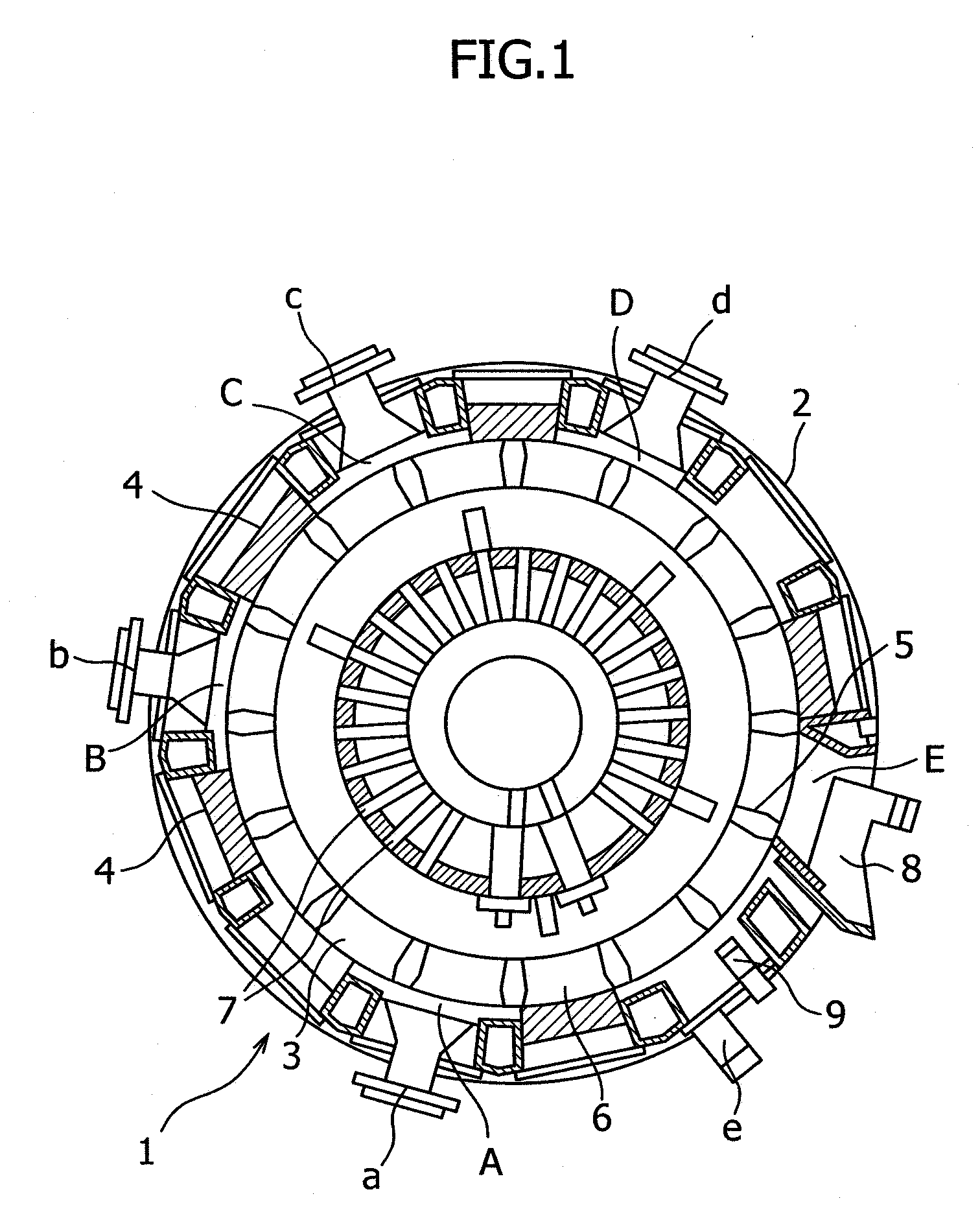Methods for preparing alkali cellulose and cellulose ether
a technology of cellulose ether and alkali cellulose, which is applied in the field of alkali cellulose and a method for preparing cellulose ether, can solve the problems of uneven alkali distribution in the alkali cellulose, damage to the commodity value of cellulose ether as a foreign matter, and deterioration of the quality of cellulose ether, so as to achieve efficient preparation of alkali cellulose
- Summary
- Abstract
- Description
- Claims
- Application Information
AI Technical Summary
Benefits of technology
Problems solved by technology
Method used
Image
Examples
example 1
[0068] A rotary feeder type apparatus (rotating filter) having a drum inner diameter of 240 mm, a chamber height of 15 mm, a chamber width of 100 mm and a screen size of 0.08 mm was installed. The rotational speed of the drum was set at 75 rph. From a connection pipe (a), 4-mm square pulp chips having a solid concentration of 93 wt % was introduced at a rate of 15 kg / hr. From each of nozzles (b), (c) and (d), a 49 wt % aqueous sodium hydroxide solution of 40° C. was fed at a rate of 150 L / hr.
[0069] The outlet of the rotary feeder type contactor was connected to a V-shaped disc press. A contact mixture of the pulp chips and the sodium hydroxide solution discharged from the rotary feeder type contactor was drained continuously. The weight ratio of the alkali metal hydroxide contained by the alkali cellulose thus obtained to the solid portion contained by the pulp, which was determined by the titration method, was 1.25.
example 2
[0070] In a similar manner to Example 1 except that the rotational speed of the drum was set at 110 rph and the outlet of the rotary feeder type contactor was connected to a screw discharge type centrifugal dehydrator having a centrifugal effect of 600
as a drainer, alkali cellulose was prepared. The weight ratio of the alkali metal hydroxide contained by the alkali cellulose thus obtained to the solid portion contained by the pulp, which was determined by the titration method, was 1.00.
example 3
[0071] The alkali cellulose (20 kg) obtained in Example 1 was placed in a pressure-resistant reactor. After vacuuming, 11 kg of methyl chloride and 2.7 kg of propylene oxide were added for a reaction. The reaction product was washed, dried and pulverized to yield hydroxypropylmethyl cellulose. The resulting hydroxypropylmethyl cellulose had a methoxyl group (DS) of 1.90 and hydroxypropoxyl (MS) of 0.24. A 2 wt % aqueous solution of the hydroxypropylmethyl cellulose had a viscosity of 10,000 mPa·s at 20° C. The light transmittance at 20° C. of a 2 wt % aqueous solution of the hydroxypropylmethyl cellulose was measured using a photoelectric calorimeter “PC-50”, a cell length of 20 mm and visible light and was 98.0%.
PUM
| Property | Measurement | Unit |
|---|---|---|
| Weight ratio | aaaaa | aaaaa |
| Speed | aaaaa | aaaaa |
Abstract
Description
Claims
Application Information
 Login to View More
Login to View More - R&D
- Intellectual Property
- Life Sciences
- Materials
- Tech Scout
- Unparalleled Data Quality
- Higher Quality Content
- 60% Fewer Hallucinations
Browse by: Latest US Patents, China's latest patents, Technical Efficacy Thesaurus, Application Domain, Technology Topic, Popular Technical Reports.
© 2025 PatSnap. All rights reserved.Legal|Privacy policy|Modern Slavery Act Transparency Statement|Sitemap|About US| Contact US: help@patsnap.com

